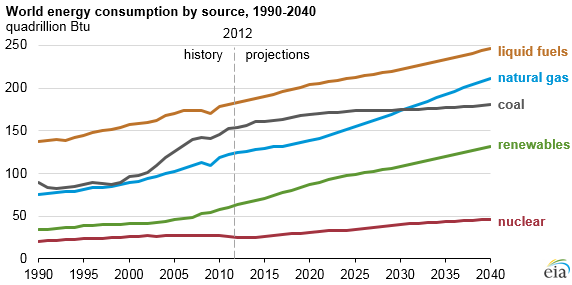 Sindicatum Renewable Energy is a consultant for the Wayang Windu geothermal plant in West Java. (Photo: Sindicatum) This article is republished with permission from the July 2016 newsletter of the CFA Singapore. |
“Electrical outages are common in many Southeast Asian countries, unlike in Singapore, where we always have power supply. There are also people who do not even have access to the modern electricity utilities and still use alternative fuels such as kerosene, diesel and wood fuel.
“Demand for electricity is expected to increase significantly over the next 10 to 20 years as electricity utility systems improve and infrastructure reaches more people,” said Dr Jay Mariyappan, Managing Director of Sindicatum Renewable Energy Company.
|
– Dr. Jay Mariyappan
|
For example, about 20% of the Indonesian population still use alternative fuels.
To provide these people with proper access to electricity, Indonesia wants to build capacity for 25 to 35 gigawatts of electrical power in the next 5 years.
Asia’s abundance of renewable energy resources has translated into great opportunity for building new renewable energy capacity in the region.
These resources include municipal waste, geothermal power, wind (onshore / offshore), solar power (ground mounted / roof top / concentrated), agricultural waste (from sugar, rice, palm oil), hydropower, biogas from wastewater, energy crops and tidal waves.
Over the past 7 years, investment in renewable power capacity has greatly exceeded that for fossil fuel.
In 2015, a record US$367 billion was invested in clean energy. The greater part of this investment went into the Asia Pacific region, especially China.
| ♦ Global push for clean energy |
|
“Internationally, there are many drivers for the development of the renewable energy sector,” he said. Clean energy investment is expected to be boosted by developments in financial markets such as emissions trading and green bonds. “We expect the Paris Agreement to come into force prior to 2020. |
 Sindicatum is a consultant to the Geli Bridge hydro-electric plant at Qingshuihe River in Guizhou Province, China. (Photo: Sindicatum)
Sindicatum is a consultant to the Geli Bridge hydro-electric plant at Qingshuihe River in Guizhou Province, China. (Photo: Sindicatum)
Enabling Technologies
One reason for the sector’s rapid development is the advancement of technology for wind and solar power. Great strides have also been made in enabling technologies such as smart grids that tap into different energy sources. This has enabled intermittent power sources supply such as wind farms to be integrated into the power grid.
Enabling technologies also help with energy storage, increasing performance at much lower costs. The cost of wind power has fallen by 50% since 2009 while that for solar power has fallen by 80% since 2008.
|
“In recent times, we have seen record low prices for the construction of renewable energy generation.” – Dr. Jay Mariyappan |
“In May, at the second tender for a solar power plant in Dubai, the winning bid was a record low of 2.6 US cents per kilowatt-hour, much lower than the cost of any fossil fuel generation.
“In Morocco, a wind power plant was recently commissioned for construction at 3 US cents per kilowatt-hour. In Mexico, we saw a large solar power plant commissioned for construction at 3.6 US cents per kilowatt-hour.
“Including subsidies, the price of electricity in Asia can be as low as 3 to 4 US cents per kilowatt-hour. On the other hand, it is as high as 25 US cents in the Philippines. This disparity translates into opportunity for renewable energy investment.
“Renewable energy is often perceived as a costly option. What many people do not realize is that subsidies on the production of fossil fuel and nuclear power have been far greater than on renewable energy.
“Comparing costs on a level playing field that is without subsidy, renewable energy has actually become very competitive when compared with fossil fuels.
“We are building our second solar power plant in the Philippines and competing by undercutting retail power prices. This shows that we can compete without any government subsidy,” he said.
| ♦ Return considerations | |
|
Investors in renewable energy projects have ranged from venture capitalists, private equity, infrastructure funds to pension funds, mezzanine debt financiers and senior debt financiers. These diverse players have different investment horizons, expected returns and risk appetites.
The operational cost for a renewable energy project is much lower than for offshore and marine oil exploration because there is no need to pay for fuel. |
 Chilwaria (above) is Sindicatum's joint venture with Simbhaoli Sugars, to own, expand and operate bagasse-based (primarily sugar-cane residue) power generation in the state of Uttar Pradesh under India’s new initiative to promote clean electricity. (Photo: Company)
Chilwaria (above) is Sindicatum's joint venture with Simbhaoli Sugars, to own, expand and operate bagasse-based (primarily sugar-cane residue) power generation in the state of Uttar Pradesh under India’s new initiative to promote clean electricity. (Photo: Company)
Risk considerations
The value of a renewable energy project changes as it goes through the various stages of its life cycle. Like most construction projects in developing nations, there are risks associated with delays to permits and issues with land use rights. After construction is completed, you have less risk, but your off-taker (utility company) may delay payment.
Other risk considerations include the credit worthiness of the sponsor or developer, the technology behind the project, fuel supply and environmental impact. Many investors in clean energy are concerned about local environmental impact and social impact.
“One way to mitigate risk is to transfer certain processes to professionals until you are ready for the risk profile of your investment project.
“We reduced risk for our solar power project in the Philippines by paying an engineering, procurement and construction contractor.”









